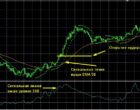Contents
This statement uses information such as net income for current accounting period, opening balance of retained earnings, dividend distributed in current period etc. As no explicit information is provided regarding changes in retained earnings in the balance sheet, a separate statement called «Statement of Retained Earnings» may be prepared by companies. The purpose of this statement is to outline changes in retained earnings for given accounting period. This statement is prepared in line with applicable accounting standards such as GAAP, IND AS or IFRS.
- The dividend payout ratio refers to the ratio of the aggregate dividend payments to the net income of the dividend-paying company.
- The retention ratio indicates how much the percentage of a company’s earnings is credited back in business rather than being paid out as dividends to shareholders.
- Rather than this yield being presented in the form of a currency, it is shown as a percentage.
- When valuing firms, young investors get stuck in understanding the difference between reinvestment rates and retention rates.
- We collect, retain, and use your contact information for legitimate business purposes only, to contact you and to provide you information & latest updates regarding our products & services.
The investor discovers that the company does not pay a lot of dividend out to its shareholders. The ration of earnings which it retains amounts to 90.0%, which is also known as the plowback ratio. The dividends are the money which is provided to the shareholders on common stock can be found in cash flows statement. The reason they are not mentioned in the income statement is because they are not an expenses for the company. The dividend decision of a firm depends on the profits, investment opportunities in hand, availability of funds, industry trends in dividend payment, and company’s dividend payment history. Performing Subtractions – In order to see the complete picture of a company and understand the broader ways in which it returns value to its shareholders, consider subtracting preferred stock dividends.
Retention Ratio
A dividend payout ratio, therefore, doesn’t shed light on the complete picture. This broader vision can be seen by taking into account the following. A higher Retention Ratio is not always good because we have to check different dilemmas. The retention ratio of a particular company is high, but its net profit is decreasing over a period is also a not good sign.
He writes about personal finance, income tax, goods and services tax , company law and other topics on finance. Companies that are still growing or have less cash flow are likely to plow back a high portion of their earnings or all earnings back into the business to reinvest in operation. Thus, the usage of RR as a financial metric falls short in every aspect. It can be utilised solely by a company to account for the percentage of profit it can utilise for growth in the future. Furthermore, RR also does not illustrate how effectively the retained funds are being reinvested into the business. The ratio also fails to capture whether the retained capital has been reinvested and whether such reinvestment is done effectively and efficiently.

The ratio of earnings paid out to shareholders as a dividend relative to the net profit of the company is calculated as dividend payout ratio or DPR. In other words, it’s a percentage of earnings paid to shareholders as a dividend, therefore it’s also referred to as the payout ratio. Retention ratio – the percentage of retained earnings for a company during a particular period is akin to an individual’s savings account. Retention ratio and dividend payout ratio are converse to one another, as shown by the payout ratio formula.
Retained Earnings are shown on the liability side of Balance Sheet. Retained Earnings decrease when loss occurs and increase when there is a profit. Check your Securities /MF/ Bonds in the consolidated account statement issued by NSDL/CDSL every month.
How do we calculate EPS?
Sharpe Ratio can compare two funds that have the same risks or the same returns or to a benchmark, which can help the investor understand how well he will be compensated. Generally, a company that is matured pays a steady dividend each year. In contrast, a company which is yet to break-even or make profits will not pay any dividend to the shareholder. Also, a higher retention ratio may indicate the growth-oriented nature of a company which wishes to invest in expansion. The dividend yield makes clear the extent to which a company has made payments via dividends over a year.

A higher inventory turnover means that goods are being sold quickly and less stock is sitting idle. The average inventory is arrived at by taking an average of the cost of goods during two or more specified time periods. It usually includes at least beginning inventory balance and closing inventory balance of the same year. Efficiency ratios may be defined as a measure of a company’s capabilities with regards to using its resources to maximise its earnings. If you plan to invest in certain equity or debt, it can help you predict wealth gains and dividend pay-outs in the long-term, thereby helping you choose the right stock.
ELM constantly experiments with new education methodologies and technologies to make financial education effective, affordable and accessible to all.
To calculate dividends received you can simply multiply how many shares of the stock you own on the ex-dividend date times the dividend amount. To determine the dividend yield you’d divide the annual dividends paid by the price of the stock and then multiply that value by 100 to get a percentage yield. A company may also capitalize its retained earnings by issuing bonus shares. The remaining portion of retained earnings not capitalized may be distributed as dividend or may be carry forwarded as retained earnings to next accounting cycle. It is calculated by dividing the reinvestment of a firm by its after-tax operating income.
Setting Dividend Payout Ratio Against Dividend Yield
These ratios are also referred to as leverage ratios in that they estimate a firm’s ability to manage its financial commitments and conduct business in the long term. Different types of ratio analysis under this category include debt-equity ratios, equity multiplier, and debt-assets ratios. A company’s dividend payout policy is the decision about the distribution of the company’s profits to its shareholders. A dividend payout policy of a firm is a financial decision that involves decisions on dividend payout ratio, and the frequency of dividends.
Ratio Analysis is a quantitative method of evaluating the profitability, efficiency, liquidity, solvency and potential growth of a firm by external investors using its financial statements. Just upload your form 16, claim your deductions and get your acknowledgment number online. You can efile income tax return on your income from salary, house property, capital gains, business & profession and income from other sources. Further you can also file TDS returns, generate Form-16, use our Tax Calculator software, claim HRA, check refund status and generate rent receipts for Income Tax Filing. An investor want to know the retention ratio of the company XYZ he invested in, and he finds out the net income company made for the year is Rs.200000, whereas the dividends it paid amounted to Rs.20000.
Earnings yield is defined as EPS divided by the stock price (E/P). It isn’t unusual for a company to endure a bad year without putting its payouts on hold. Continued dividend payouts despite the tough times are often in a company’s best interest. By considering https://1investing.in/ future earning expectations and calculating a forward-oriented payout ratio, it is possible to understand the context of a backwards-oriented payout ratio. A number of factors must be considered when interpreting a company’s dividend payout ratio.
So, when the company has constructive plans, retains some money from the net profit earned, after some or no proportion of dividend is paid out. These factors will lead you to the product, which is the Retention ratio, so you aren’t too far away from commuting the formula. You can take the help of the calculator earning retention ratio formula we put up in the article, which can be found by the end. You can do everything from the Fi App, including p2p payments, fund transfers, bill payments, and more, with features to automate every action. You also get a Fi Debit card, spends insights and tools to grow your investment and earn rewards.
What are the different categories of ratio analysis?
For the uninitiated, this ratio is used to set the total amount of dividends that are paid to shareholders against the net income of the company under consideration. Simply put, it highlights the percentage of earnings paid to shareholders in the form of dividends. The amount that isn’t shared with shareholders remains under the company’s hold. The remaining amount held back can be used for several reasons like business expansion, repaying debts etc.
Similar to the P/E ratio, it is also a measure to identify if a stock is overvalued or undervalued. It gives a broader image of a company’s performance by smoothing out cyclical effects. Previously, the CAPE ratio gave warnings regarding market bubbles and crashes.
Companies retain some portion of their profits for development, growth, and expansion. Some important efficiency ratios include asset turnover ratio, inventory turnover, payables turnover, working capital turnover, fixed asset turnover, and receivables turnover ratio. A dividend payout ratio is a proportion of a company’s earnings that is paid to the shareholders.
Growth rate in operating profit of a firm is calculated as a product of its return on capital and reinvestment rate. A higher reinvestment rate reflects a higher growth rate in earnings for shareholders for a given return on capital projection for a firm. Therefore, retention rate is a variable of importance while valuing total claims of a firm. Analysts, market experts, and investors calculate the payout ratio and retention ratio to determine the nature of the company and its policies. The ratios could be usefully analysed over a long period to determine the growth of a company and the return to shareholders. The analysis may also indicate the strength of the balance sheet of a company and its liquidity position.
In the due course of the 3rdyear, the net income amounted to Rs.10,000, and she paid out a dividend of Rs.2500. During the final year, her business generated a net income of Rs.15,000 from which she paid out Rs.4000 as dividends. The second formula, however, utilises the dividends distributed by a company to its shareholders to calculate the RR. Here, the dividends are subtracted from a company’s net income and the resultant figure is then divided by the net income to obtain the retention ratio. The basic definition of a P/E ratio is stock price divided by earnings per share . EPS is the bottom-line measure of a company’s profitability and it’s basically defined as net income divided by the number of outstanding shares.
It is then divided by the company’s net income located at the bottom of its income statement. At their most basic level growth rates are used to express the annual change in a variable as a percentage. An economy’s growth rate for example is derived as the annual rate of change at which a country’s GDP increases or decreases. This rate of growth is used to measure an economy’s recession or expansion.









